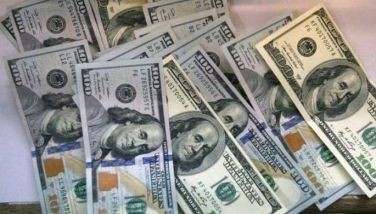Eye of the storm
Last week, our country experienced the most powerful typhoon ever to make landfall in recorded history. Typhoon Yolanda (international name: Haiyan) packed winds nearly double the speed of major typhoons and wreaked havoc on Leyte all the way to Palawan. The human tragedy was of epic proportions, prompting calls for aid from all around the world.
Most vulnerable
According to Maplecroft, a research company based in England, the Philippines is the country most at risk of typhoons and earthquakes after Japan. While we get our own fair share of typhoons every year, they seem to be getting more powerful every year. According to the Asian Development Bank (ADB), the Philippines may be losing as much as $1.6 billion annually to natural disasters. Kinetic Analysis Corporation, a disaster modeling firm, said that losses due to Yolanda may range between $12 billion to $15 billion, about five percent of our country’s GDP.
By the billions
Given the widespread damage caused by Yolanda, it will take some time before the final death toll and economic impact can be measured. One thing is for sure – this tragedy is one of the biggest global disasters ever recorded in history. As of this writing, government agencies are counting the dead by the thousands and the economic damage by the billions. According to the National Disaster Risk Reduction and Management Council (NDRRMC), agricultural damage alone is already at PhP 6.9 billion and confirmed dead are already in excess of 3,680 people with many more missing. Estimates from the United Nations are even bleaker, saying that at least 4,460 have died as a result of Yolanda. An earlier estimate even had the death toll close to 10,000. Unfortunately, while this may be the worst storm we have experienced so far, history shows that the Philippines faces severe typhoons every now and then. See below a list of typhoons that struck the country, ranked by economic damage.

Source: NCSB, NDCC, NDRRMC
GDP to take a hit
According to National Economic and Development Authority (NEDA) Director General Arsenio Balisacan, GDP growth in 4Q13 is expected to be around 4.1% only. The regions hardest hit by Yolanda account for about 12.5% of the country’s GDP and about 20% of the population. Thus, full year GDP growth is expected to settle around 6.5-7%, below the greater than 7% forecasts of economists. However, the resulting rehabilitation and reconstruction may provide a boost to our GDP in 2014 as rebuilding begins.
Foreign aid floods in
With Eastern Visayas becoming ground zero for the most powerful storm to ever hit land, all eyes were on the Philippines. Coverage by international news networks allowed foreigners to see the destruction wrought by Yolanda with their own eyes. This led to an outpouring of aid. International donations now amount to hundreds of millions of dollars, with many more countries and institutions pledging to give more. Various countries have sent aid in the form of equipment, disaster response teams, and even planes and aircraft carriers. Our own countrymen have also pitched in for their less fortunate neighbors. We at Philequity laud the generosity and bayanihan spirit of both the local and international community.
Like a storm surge
In a storm surge, the initial wave is not enough to topple a house. However, the repeated smashing of the waves that follow will eventually destroy houses and even buildings. Analogous to a storm surge, the Philippines was hit by wave after wave of natural and man-made disasters. These were several strong typhoons, a strong earthquake, the Zamboanga siege, the Napoles pork barrel scam and finally, Yolanda.
The straw that broke the camel’s back
Houses and buildings can only take so much pounding before giving way. This analogy also applies to stocks. Our market can only take so much bad news before giving way and Yolanda was the straw that broke the camel’s back. While storms are normal in our country, it was the immense power of Yolanda that made it a black swan event.
Yolanda batters the stock market
The power and battering of Yolanda finally broke the strong PSEi support level of 6,500. The scenes of destruction seen on TV were so harrowing that some foreign funds may have been led to believe that the destruction was so widespread as to have a bigger impact on GDP. While we cannot measure the exact economic impact of this disaster yet, some foreign investors sold first before asking questions prior to the final assessment. On November 11, the first trading day after Yolanda struck, our market lost as much as 150 points.
Market eventually recovers from disasters
Having unprecedented strength, Yolanda is similar to the tsunamis that hit Japan and Indonesia in that it affected the country’s economy significantly enough to cause a stock market plunge. Philequity has written articles about previous disasters, both local and international, and their effect on stock markets (see Typhoon Milenyo Closes Financial Markets, 2 October 2006, Oil Price Surge, Earthquake and Nuclear Fallout, 28 March 2011, and Another Epic Flood, 13 August 2012). As can be seen in the table below detailing past disasters, after the initial kneejerk drop, markets eventually recover.

Source: Wealth Securities research
A defining moment
History shows that our stock market will eventually recover from this tragedy and move forward. However, the suffering of our countrymen will likely continue long after our stock market has recovered. Thus, the government must push harder in ensuring that aid reaches those who need it the most as soon as possible. President Benigno Aquino, Jr., should see this crisis as an opportunity to show how effective his government is in responding to a crisis. This can also serve as a platform for government to showcase its reconstruction, rehabilitation and recovery program. With the world watching his every move and his country recently emerging from the eye of the storm, this may well be his defining moment. A moment for him to shine.
Please visit our online trading platform at www.wealthsec.com or call 634-5038 for detailed stock market research. You can also visit www.philequity.net to learn more about the Philequity Fund and view our archived articles. You can email us at f[email protected] for feedback on the Philequity Corner articles.
- Latest
- Trending






























